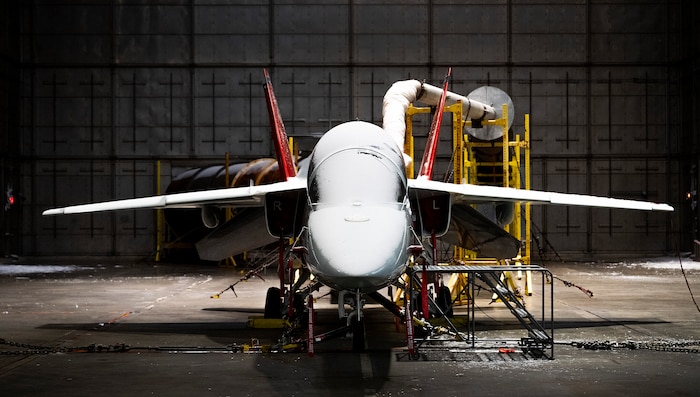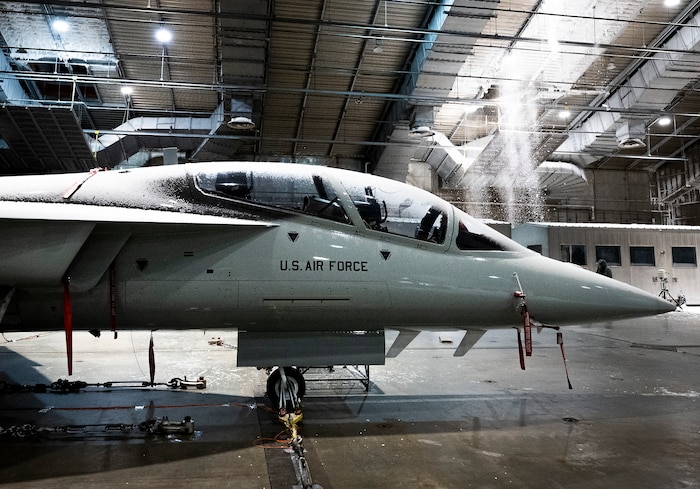A T-7A Red Hawk, the Air Force's new trainer aircraft, completed a month-long trial of extreme weather inside the McKinley Climatic Laboratory, Feb. 23.
The Boeing test aircraft endured real temperatures ranging from 110 degrees to minus 25 degrees Fahrenheit as well as heavy humidity conditions. All of those scenarios created within the lab's 55,000 square foot test chamber.
The goal of these punishing tests was to verify the new aircraft's sustainability in any operational environment.
"We need to know the T-7A can operate in the environmental conditions it will encounter at pilot training bases around the country," said Dr. Troy Hoeger, chief development tester for the T-7 with the Air Force Lifecycle Management Center.
Once the lab technicians created the extreme environments, Boeing and Air Force aircrew performed system operations and engine runs to evaluate the aircraft's reactions in those scenarios.
A significant amount of the test schedule was dedicated to preparing the chamber for the extreme conditions. McKinley's lab professionals create, break down, and recreate again each new test environment. Technicians worked continuously to go from a superheated 100-degree desert condition to a below freezing icebox in only a few days.
"McKinley Climatic Laboratory maintains quickness and technical proficiency by retaining our own staff of highly experienced welders, machinists, electricians, instrumentation experts, test assembly personnel and refrigeration operators," said Melissa Tate, the lab's flight chief. "Our main mission is to support the warfighter and to ensure any environment they encounter in the field; their equipment has already been proven in those extremes."
With every new aircraft or piece of equipment, the lab crews accommodate and sometimes find new ways to support the specific requirements that may arise. The T-7 was no different. The maintenance and logistics teams ensured things ran like clockwork, according to Tate.
After testing in the climatic lab tests, T-7A will return to Boeing to ensure the aircraft's technical orders are safe and accurate for the operators and maintainers that will interact with it.
"The T-7A will replace the T-38C Talon, drastically improve training for the next generation of fighter and bomber pilots and will better prepare student pilots to advance into fourth and fifth generation fighter and bomber aircraft," said Hoeger.








